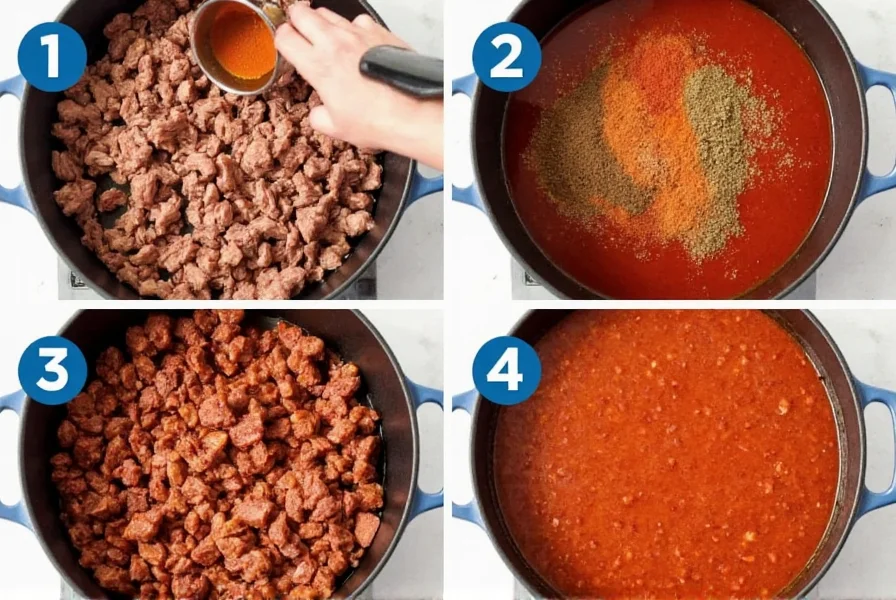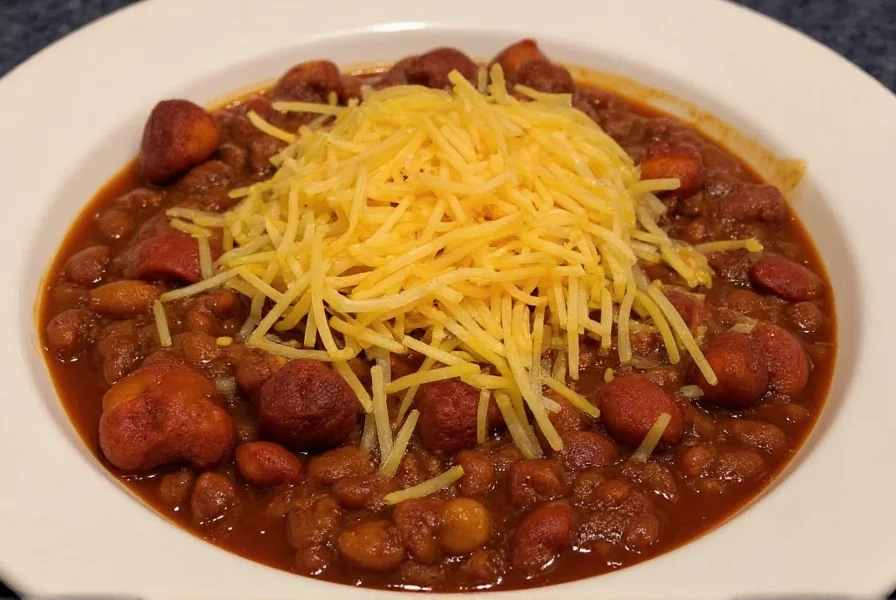For decades, Ike's Chili has been a staple at family gatherings and community events across the Midwest. This robust dish stands apart from other regional chili variations through its specific ingredient ratios and cooking technique. The authentic version uses coarsely ground beef rather than finely minced meat, allowing for better texture retention during the slow simmering process that develops its complex flavor profile.
The History of Ike's Chili
The origins of Ike's Chili trace back to the 1940s in rural Illinois, where a man named Isaac "Ike" Henderson developed his signature recipe while working as a meatpacker. Unlike Cincinnati chili which is typically served over spaghetti, Ike's creation was designed as a standalone dish meant to be enjoyed with cornbread or saltine crackers. Local historians note that Henderson's recipe gained popularity through church potlucks and fire department fundraisers before spreading throughout the region.

Authentic Ike's Chili Ingredients
Creating genuine Ike's Chili requires precise ingredients that work together to produce its distinctive taste. The recipe balances savory, spicy, and slightly sweet elements without overwhelming heat. Here's what you'll need for a traditional eight-serving batch:
| Ingredient | Amount | Notes |
|---|---|---|
| Coarsely ground beef (80% lean) | 3 lbs | Never use leaner than 80% for proper fat content |
| Yellow onion, diced | 2 cups | Yellow provides better sweetness than white |
| Canned crushed tomatoes | 28 oz | San Marzano variety preferred |
| Chili powder | 3 tbsp | Use pure chili powder, not seasoning blend |
| Ground cumin | 2 tbsp | Freshly ground yields best flavor |
| Unsweetened cocoa powder | 1 tsp | Essential for authentic depth of flavor |
| Beef broth | 2 cups | Low sodium preferred |
Step-by-Step Cooking Instructions
Preparing authentic Ike's Chili requires patience and attention to detail. The slow cooking process allows flavors to meld while maintaining the proper texture. Follow these steps for the best results:
- Brown the beef in a heavy-bottomed pot over medium-high heat, breaking into coarse chunks
- Add onions and cook until translucent (about 5 minutes)
- Stir in chili powder, cumin, and cocoa powder, cooking for 2 minutes to toast the spices
- Add crushed tomatoes and beef broth, bringing to a gentle simmer
- Reduce heat to low and cover, simmering for at least 2 hours (4 hours preferred)
- Stir occasionally and skim excess fat from the surface
- Taste and adjust seasoning 30 minutes before serving

What Makes Ike's Chili Unique
Several factors distinguish authentic Ike's Chili from other regional variations. First, it contains no beans—a point of pride among traditionalists. Second, the inclusion of unsweetened cocoa powder creates a subtle depth without chocolate flavor. Third, the meat-to-liquid ratio is higher than in many chili recipes, resulting in a thicker, heartier consistency.
Unlike Texas-style chili which often omits tomatoes, Ike's version relies on crushed tomatoes for its base. The spice profile avoids the cinnamon and allspice found in Cincinnati chili while maintaining moderate heat—typically between 2,000-4,000 Scoville units depending on the chili powder used.
Serving Suggestions and Variations
Traditional Ike's Chili is served in wide, shallow bowls with saltine crackers on the side. For an authentic experience, never serve it with cheese, sour cream, or other toppings that would mask its carefully balanced flavors. Cornbread is the preferred accompaniment, with its slight sweetness complementing the chili's savory notes.
While purists insist on the original recipe, several acceptable variations exist:
- Weekend version: Add one diced bell pepper with the onions
- Game day adaptation: Include one diced jalapeño (seeds removed) for extra heat
- Cold weather variation: Stir in two tablespoons of masa harina for thicker consistency
Common Mistakes to Avoid
Many home cooks make critical errors when attempting Ike's Chili for the first time. Understanding these pitfalls ensures better results:
- Using lean ground beef (results in dry, crumbly texture)
- Over-processing the meat (should have visible chunks)
- Rushing the simmering process (minimum 2 hours required)
- Adding beans (not traditional in authentic Ike's Chili)
- Using chili seasoning blend instead of pure chili powder
Remember that authentic Ike's Chili develops better flavor when made a day ahead—the flavors continue to meld as it rests in the refrigerator. Simply reheat gently on the stove before serving, adding a splash of broth if needed.
Frequently Asked Questions
What's the difference between Ike's Chili and Cincinnati chili?
Ike's Chili differs significantly from Cincinnati chili. While Cincinnati chili features Mediterranean spices like cinnamon and allspice and is typically served over spaghetti, Ike's Chili has a more straightforward savory profile with cumin and chili powder as primary spices. Ike's version contains no cinnamon, is served as a standalone dish (not over pasta), and has a thicker consistency with visible meat chunks.
Can I make Ike's Chili in a slow cooker?
Yes, you can adapt Ike's Chili for a slow cooker. Brown the meat and sauté the onions first, then transfer to the slow cooker with other ingredients. Cook on low for 6-8 hours. However, traditionalists prefer stovetop preparation as it allows better control over the reduction process and fat skimming that contributes to the authentic texture.
How long does authentic Ike's Chili keep in the refrigerator?
Properly stored in an airtight container, Ike's Chili maintains peak flavor for 3-4 days in the refrigerator. Many enthusiasts believe the flavor improves after 24 hours as the ingredients continue to meld. For longer storage, freeze portions in freezer-safe containers for up to 3 months. Thaw overnight in the refrigerator before reheating gently on the stove.
Is Ike's Chili supposed to be spicy?
Authentic Ike's Chili has moderate heat rather than extreme spiciness. The traditional recipe aims for a warming sensation without overwhelming heat—typically between mild and medium on most heat scales. The cocoa powder and tomato base balance the chili powder's heat. Those preferring milder versions can reduce chili powder to 2 tablespoons, while heat lovers might add cayenne pepper to taste during the final 30 minutes of cooking.
Why does the recipe include cocoa powder?
The unsweetened cocoa powder in Ike's Chili serves as a flavor enhancer rather than adding chocolate taste. It contributes to the dish's complexity by providing subtle bitterness that balances the acidity of the tomatoes and enhances the savory meat flavors. This technique, common in many Southwestern and Mexican dishes, creates depth without being detectable as chocolate. Use only natural unsweetened cocoa powder—never Dutch-processed—for authentic results.











 浙公网安备
33010002000092号
浙公网安备
33010002000092号 浙B2-20120091-4
浙B2-20120091-4